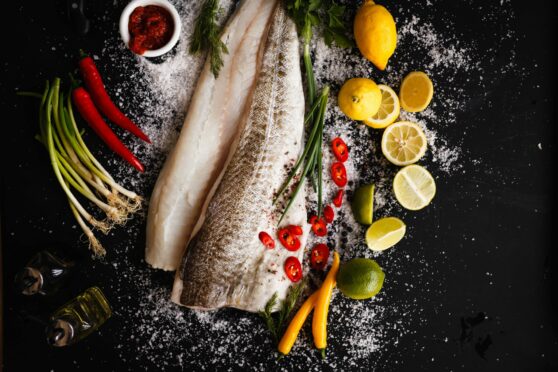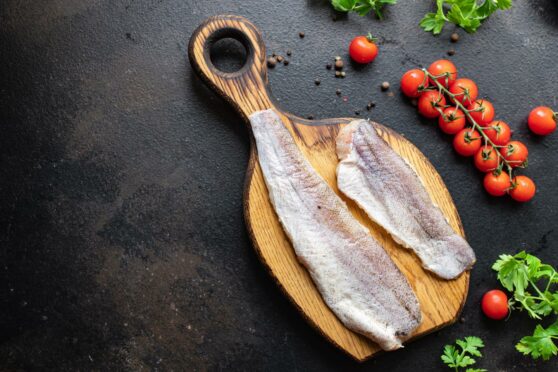Garry Watson, chef owner of Gordon’s Restaurant with Rooms in Inverkeillor, teaches us the delights of a white Scottish fish that has become a beloved food in Spain.
Hake, a steely-grey fish of the cod family, is beautiful, delicate and melt-in-the-mouth good, it has a subtle and delicious flavour similar to cod.
Best of all, it is environmentally sustainable and also very easy to prepare as it has relatively few bones.
There is a popular myth that fish stock is low in our seas, when actually it’s very healthy and hake in particular is in abundance.
However, in almost all of our west coast waters the hake quota is delegated to Spanish fishermen.
Spain’s favourite fish
Daily loads of stunning hake from the Arctic and other Scottish fish travel straight past our doors on a journey to Spanish restaurants and markets.
Hake is undoubtedly Spain’s favourite fish and almost every Spanish cook will say it’s the best white fish to eat.
I agree and as a country I think we should eat more of it.
When cooking, it’s a great alternative to any dish that requires cod and would provide a delicious dinner simply grilled in lemon butter but it also takes on robust flavours fabulously, particularly tomatoes, garlic, curry, chorizo and paprika.
Another modern healthy cooking method that works great with hake is Ceviche.
Ceviche, for those that steer clear of such vulgar things such as trends, is, at its most basic, raw sliced hake marinated in citrus juice and spices; the acid in the juice denatures the proteins in the meat the same way cooking would.
It results in an incredibly clean and fresh flavour keeping the moist juicy texture of the hake.
It goes without saying that any fish served raw should be spanking fresh.
This is where we have the upper hand over the Spanish when it comes to cooking, as the produce is on our doorstep one to two days before them.
Hence why Scotland is the finest place in the world to open a restaurant.
Cooking it
When cooking hake I recommend that you prepare fresh fillets, skin on by sprinkling liberally with sea salt and allow it to sit for 15-30 minutes.
Then rinse under cold water and pat dry.
This step is somewhat like brining – it helps to keep the fish moist and slightly firmer – however, frozen fish should never be salted.
Then oil the fish and place skin side down in a cool non-stick pan and gradually increase the heat (this stops the fish curling up), continue cooking on skin side until golden brown and crisp skin, then turn fish in pan and switch off heat source, leaving the hake for a few minutes to slowly rest and finish cooking, perfect!

